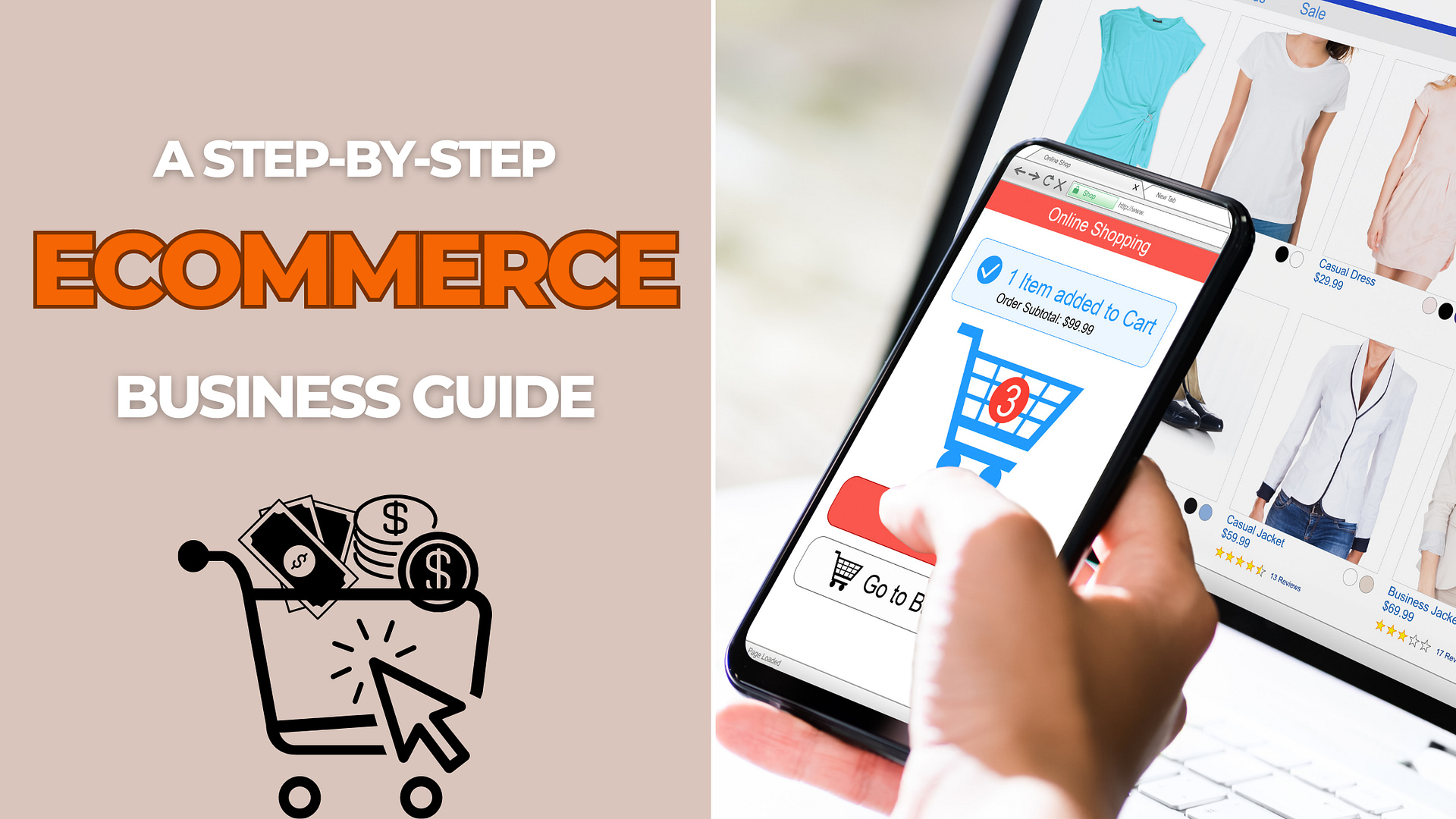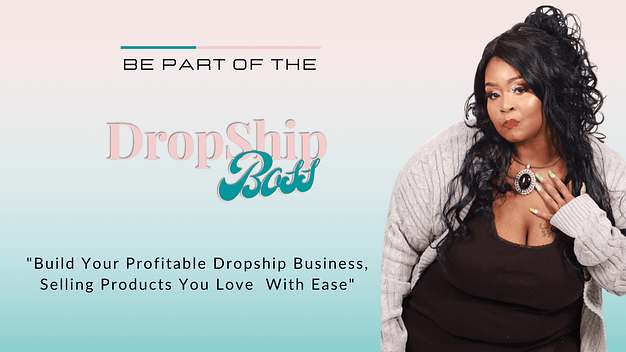**This site contains affiliate links to products. We may receive a commission for purchases made through these links**
Table of Contents
ToggleIn today’s fast-paced digital world, many individuals want to create additional income streams that can earn money even while they sleep. One of the most effective ways to do this is through eCommerce, where you can use the power of the internet to build a successful online business like dropshipping.
Dropshipping is an eCommerce business model where sellers act as intermediaries between customers and suppliers. The seller market and sell products without having to hold inventory, as suppliers handle product storage and shipping. Join our waitlist for the dropshipping membership and be the first to access exclusive resources and insights to kickstart your dropshipping journey.
Statistics show that the potential for passive income through eCommerce is huge. Global eCommerce sales continue to grow, it is expected to total $6.3 trillion in 2023 according to Forbes Advisor. This massive growth presents incredible opportunities for entrepreneurs looking to take them on will be involved in this growing market.
But how do you navigate the complex world of e-commerce and generate sustainable passive income? That’s what this blog aims to address. We’ve created this step-by-step guide that will give you the knowledge and tools you need to get started on your eCommerce journey.
Before committing to actionable steps, it’s important to understand the potential rewards. The average person can earn between $500 and $5,000 a month in passive income through eCommerce. Consider the financial freedom and flexibility that comes with having a steady income that requires minimal effort once established.
In this blog, you’ll learn how to identify profitable niches, conduct market research, set up your online store, source products or services, and plan effective marketing strategies.
A Step-by-Step eCommerce Business Guide
Take a look at this step-by-step eCommerce business guide for your future reference in building a passive income. From finding a profitable niche to planning effective marketing strategies, we offer you a roadmap to navigate the world of eCommerce. With practical advice, this guide gives you the knowledge and tools you need to set up a thriving online business.
Whether you’re a beginner or somewhat experienced, our goal is to help you make informed decisions, avoid common pitfalls, and navigate the dynamic and ever-growing eCommerce.
1. Choose your niche
The first step to building an eCommerce business and earning passive income is figuring out where the profits are. Analyze various market segments, assess customer demand, and analyze the competition. Find a niche that matches your interests and has the potential to grow. Once you’ve found your niche, define your target audience and create buyer personas to better understand their needs and wants.
Top 3 eCommerce Niches in 2023
Generation Z and the Millennial Market
Younger generations, especially Gen Z and millennials, are known for their digital savviness and online shopping habits. They represent a large part of the consumer market and may continue to boost eCommerce. Targeting this demographic can create a profitable niche with products and experiences that match their interests and values.
Health and Wellness Enthusiasts
The health and wellness industry has experienced phenomenal growth, with consumers placing their well-being as a top priority. This growing specialty market can be exploited by targeting products such as organic foods, supplements, fitness equipment, sportswear, and wellness services to individuals who want to be healthy.
Environmentally and Ethically Conscious Consumers
With increasing environmental and social awareness, the demand for sustainable and ethically produced products is increasing for environmentally conscious consumers to make informed purchasing decisions by providing eco-friendly, fair trade, and cruelty-free products.
Note: eCommerce trends can vary over time, and it is crucial to do market research to validate the potential of any market niche.
2. Conduct market research
Thorough market research is important to the success of your eCommerce business. Start by defining your research objectives and identifying your target audience. Use online analytics tools to gather valuable statistics on keyword trends, search volume, and competitor analysis. You also have to dive into social media platforms to see conversations, customer sentiment, and comments. And don’t forget to connect with your audience through surveys, and quizzes to gain insight into their wants and needs.
You also wanna keep abreast of industry trends, emerging technologies, and consumer trends that can affect your business. It is important to validate your idea through small experiments or tests before you launch at all. After that, analyze the data collected and use the insights to refine your business model, improve the quality of your offerings, enhance customer experience, and stay ahead of the competition. Lastly, revisit and regularly update your market research to adapt to changing market dynamics and maintain a competitive edge in the fast-paced eCommerce industry.
3. Set up your online store
Setting up an online store is not a joke. There are lots to consider to build an eCommerce store where you can earn passive income. This guide will give you the knowledge to create a professional and successful online store. Get ready to bring your products or services to the digital marketplace and unlock the potential of eCommerce. Here are the important keys when setting up an eCommerce store:
Define your product and target market
Clearly identify the product or service you want to sell and define your target market. Conduct market research to understand your audience’s needs, interests, and behaviors. This information will help you know what you can offer and what marketing strategies to do.
Build your online store
Create a professional and user-friendly online store to showcase your products and facilitate sales. Choose a trusted eCommerce platform for your needs, such as:
- Shopify
- WooCommerce
- BigCommerce
Customize the layout and functionality of your store for a seamless shopping experience.
Establish a secure payment process
Establish a secure and convenient payment process for online transactions. Integrate with popular payment gateways like PayPal, Stripe, or Square to ensure a smooth and secure payment process for customers. Implement strong security measures to protect sensitive customer information.
Develop a strong marketing strategy
Develop a comprehensive marketing strategy to attract customers and drive traffic to your eCommerce store. Use a variety of digital marketing strategies, including search engine optimization (SEO), social media marketing, content marketing, email marketing, and paid advertising. Create compelling product descriptions, high-quality images, and appealing features to capture the interest of potential customers.
Implement efficient order management and customer service
Implement an effective order management system to ensure timely delivery of goods to customers. Make sure to handle shipping and fulfillment in-house or outsource to a third-party carrier. Additionally, prioritize customer service by offering multiple channels for support, such as email, live chat, or phone. Promptly address customer inquiries, concerns, and returns to build trust and loyalty.

4. Source Product & Inventory Management
Decide whether to make your own products or get them from suppliers. Research and select reliable suppliers or suppliers who can provide quality products at competitive prices. Establish strong relationships and communicate on appropriate terms. Implement inventory management to ensure proper inventory management, accurate inventories, and timely order control. Here are the three common ways to get eCommerce products:
Manufacturer Direct
Dealing directly with manufacturers is a popular sourcing method. This approach allows for a direct link to the source of the product, cutting out middlemen and potentially reducing costs. You can find manufacturers through online directories, trade shows, industry contacts, or thorough online research. Be sure to verify their credentials, product quality, manufacturing, and shipping before committing to a partnership.
Wholesalers
Working with wholesalers can be an easy option, especially if you’re starting from a small scale or don’t want to manage production. Wholesalers buy in bulk from manufacturers and sell to retailers at discounted prices. They often have catalogs or websites where you can browse and order. When choosing a supplier, consider factors such as product quality, price, minimum order quantity, delivery options, and return policy.
Dropshipping
Dropshipping is a business model that allows you to sell products without inventory. Instead, when a customer places an order, you send order information directly to the supplier or manufacturer in charge of storage, packaging, and delivery to the customer.
However, keep in mind that dropshipping can keep costs down compared to other sourcing methods, and you will have less control over the quality of the product and the shipping method.
Take the first step towards embarking on a rewarding journey in the world of dropshipping. Sign up for our waiting list by simply clicking HERE or clicking the image above. Rest assured, we value your privacy and will handle your information securely.
Unlock your entrepreneurial potential and join our exclusive dropshipping membership today! Access valuable resources, expert insights, and a supportive community to guide you in building a profitable eCommerce business. Don’t miss this opportunity to take a journey to financial freedom. Join us now!
5. Develop a marketing plan
An effective marketing strategy is critical to driving traffic to your eCommerce store and making sales. Develop a comprehensive digital marketing strategy that includes :
- search engine optimization (SEO)
- social media marketing
- email marketing
- content creation
- influencer partnerships
- paid advertising campaigns
Use data analytics to continuously track and optimize your marketing efforts. Also, you have to create a strong brand identity, connect with your audience, and provide valuable feedback to build trust and loyalty.
Start Your eCommerce Business Today
Starting an eCommerce business is a powerful way to build a passive income. By following the step-by-step guide outlined in this blog, you can lay the foundation for success in the digital marketplace. From choosing your niche, conducting market research, setting up your store, product sourcing and inventory, and developing a market plan, each step plays an important role in your journey to have financial freedom.
Remember that building a passive income takes time and effort, but the rewards are worth it. So, take action, be honest, and get on track with building your eCommerce business today.


